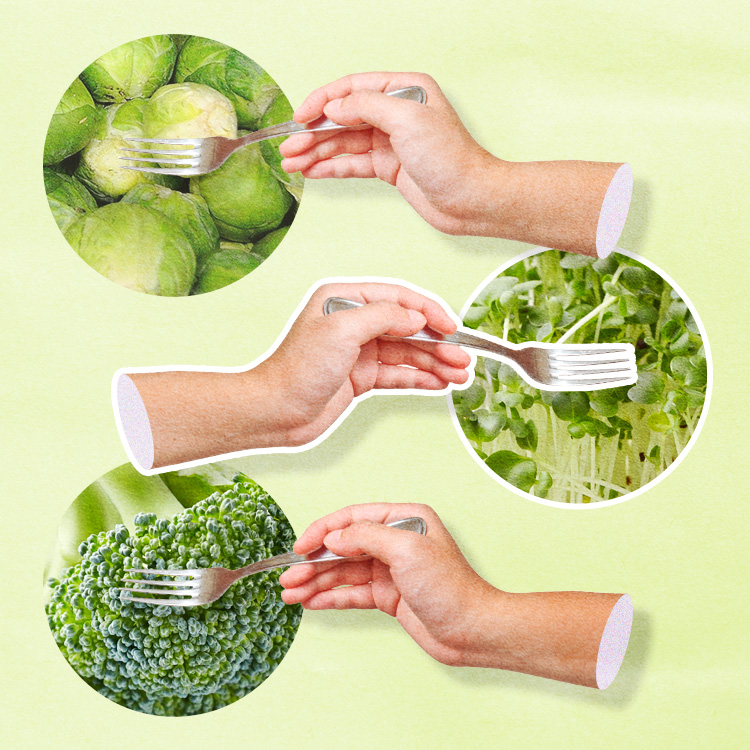If the walls of your gastrointestinal tract could talk, they’d say you are what you eat, at least as far as the composition of the trillions of microorganisms it houses is concerned. A little refresher: A healthy gut microbiome (diverse with a balanced composition of beneficial bacteria) controls gut health by communicating with intestinal cells, digesting certain foods, and preventing pathogenic bacteria from sticking to the intestinal walls.
Your diet is often the No. 1 prime suspect. #1 when things go wrong (read: bloating, cramping, and other digestive drama). And just as some foods can wreak havoc on digestive health, other foods can work to improve gut health and treat symptoms: Research says you can rapidly alter the composition and activity of your gut microbiome simply by changing what’s there. it’s on the plate. So what are the showpieces you should be loading up on for better gut health? Next, we’ll break down six essential foods to keep your gut healthy (and it’s not just your usual fermented foods). *Add to shopping list soon*
1. Green leafy vegetables
What leafy greens can’t do are the triple threat of antioxidants, vitamins, and minerals. Plus, they’re high in fiber that feeds your good gut bacteria and keeps things moving in your digestive tract. As if we needed any more reason to believe they are the true MVP of greens, leafy greens also contain a little-known nutrient called sulforaphane, which normalizes gut microbiota composition and repairs physiological breakdown of the intestinal barrier. With countless recipes starring spinach, kale and chard, from the obvious salads and smoothies to soups and pastas, incorporating leafy greens into your diet is a no-brainer.
2. Sweet potato
This starchy root vegetable is a superfood in its own right thanks to its nutritional profile. Comprised of vitamins and minerals including vitamin A, vitamin C, vitamin B6, magnesium and potassium, this should be reason enough to stock up. But its benefits don’t stop there. Because sweet potatoes also boast soluble and insoluble fiber, they help promote gut microbiome diversity, keep bowel movements regular, and help fight bloating. In addition, they are a rich source of prebiotics (food for the growth and activity of beneficial bacteria already present in the gut), such as oligosaccharides and resistant starch, which help improve the balance of intestinal bacteria and overall gut health . Whether you decide to bake, roast, spiralize, mash, or turn sweet potatoes into casseroles, fries, or brownies, you’ll be doing your gut good by munching on them.
3. Ginger
While ginger may be best known for its tangy zest, consider it your best friend for its antioxidant and anti-inflammatory properties that can support digestion and fight bloating by stimulating saliva and stomach acid production. According to Dr. Lance Uradomo, MD, MPH, interventional gastroenterologist at the City of Hope Orange County Lennar Foundation Cancer Center, ginger root contains gingerol, a natural compound that aids in gastrointestinal motility or the contractions and relaxations of the muscles of the gastrointestinal tract and the movement of ingested food and liquids through the intestines. It doesn’t hurt that adding ginger to your diet can be as simple as making yourself a cup of ginger tea (just slice ginger and pour hot water over it), add a slice of ginger root to your smoothies, or grate ginger into soups. or salad dressings.
4. Whole grains
Despite what food culture may lead you to believe, carbohydrates are not the enemy. Indeed, research shows that whole grains (such as oats) are important sources of nutrients such as fiber and prebiotics for the gut microbiota and contribute to a healthy gut microbiome. Whole grains also provide non-starch polysaccharides (NSP), resistant starch and phenolic compounds, which fuel the growth of friendly bacteria in the gut. Also, a study published in the journal Health care have shown that when a combination of different whole grains is consumed, the various types of fiber, micronutrients, and polyphenols that enter the gastrointestinal tract can produce greater bacterial diversity. By the way, “whole grains” doesn’t mean whole wheat bread (although that can be perfectly fine too!); we mean grains in their whole, unprocessed form (think: brown rice, quinoa, oats, Bulgarian wheat, quinoa, spelt, or millet).
5. Sauerkraut
No list of gut-friendly foods would be complete without mentioning fermented foods. Sauerkraut is basically pickled cabbage that contains a healthy dose of fiber and probiotics, which have been associated with maintaining a healthy gut microbiome and improving digestion and bowel function. Sauerkraut is particularly good for those who wish to consume foods rich in fiber as they contain digestive enzymes which make them gentler on the intestines and easier to break down. Another benefit of the probiotic superfood? One study found that eating sauerkraut regularly can increase good bacteria and help reduce symptoms of irritable bowel syndrome (IBS), such as bloating, gas, constipation, diarrhea and stomach pain. When shopping for sauerkraut, look for it raw and unpasteurized, then eat it over eggs, avocado toast, tacos, or a hamburger.
6. Bone broth
Chock full of protein and amino acids like collagen and glutamine, studies suggest bone broth can soothe intestinal inflammation and strengthen the intestinal barrier, which can improve healthy digestive function. According to another study, bone broth is not only able to modify the immune response by decreasing the expression of proinflammatory cytokines and stimulating the expression of anti-inflammatory cytokines, but also has a therapeutic effect against ulcerative colitis (a form of inflammatory disease intestinal). You can make your own bone broth by adding chicken or beef bones along with greens, onions, garlic, herbs, and apple cider vinegar to a large pot of water, bringing it to a boil, and letting it simmer for 10-12 hours. If you go the store-bought route, be sure to opt for an organic, grass-fed, additive-free one.

#foods #add #diet #gut #health
Image Source : theeverygirl.com